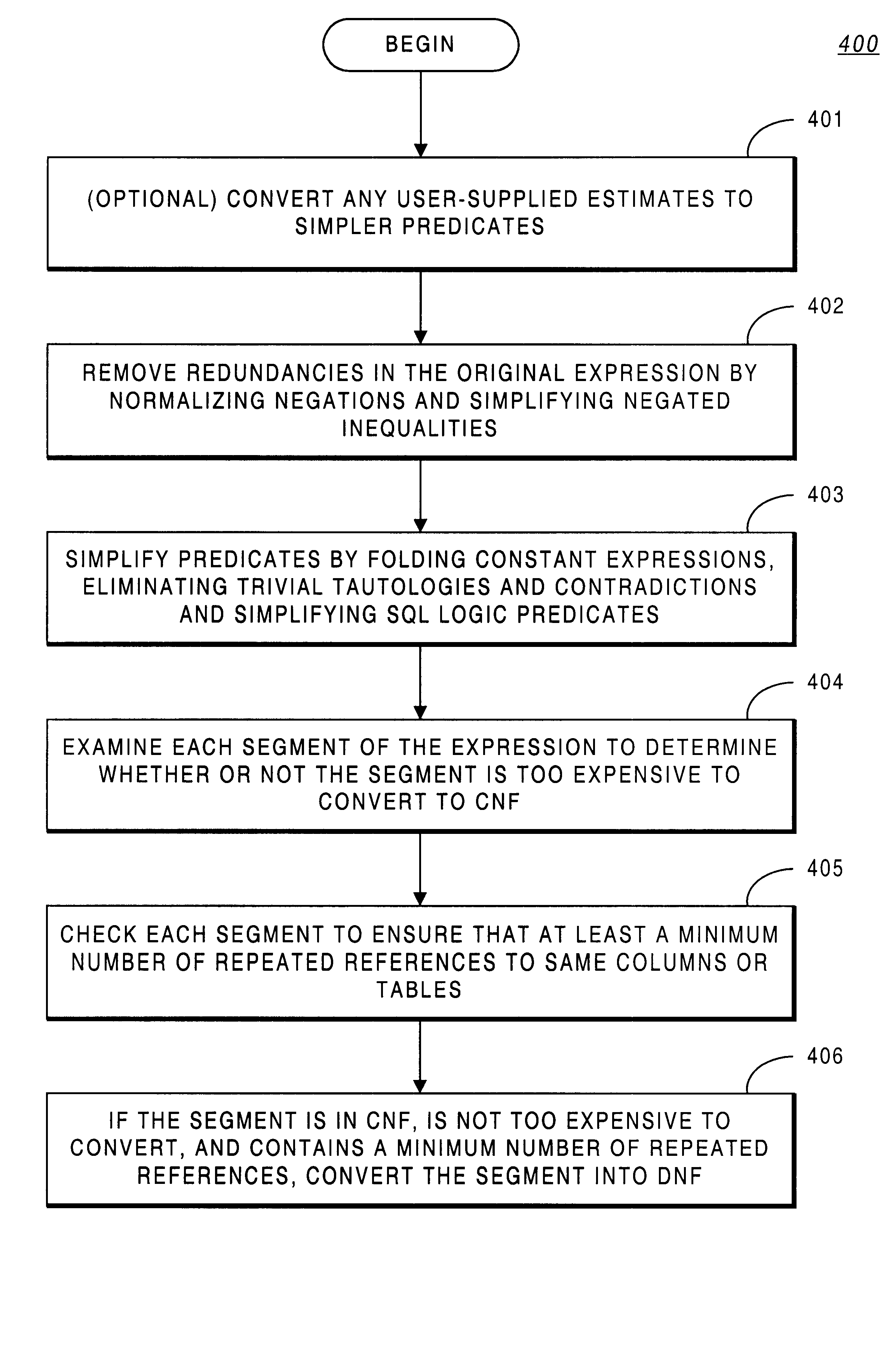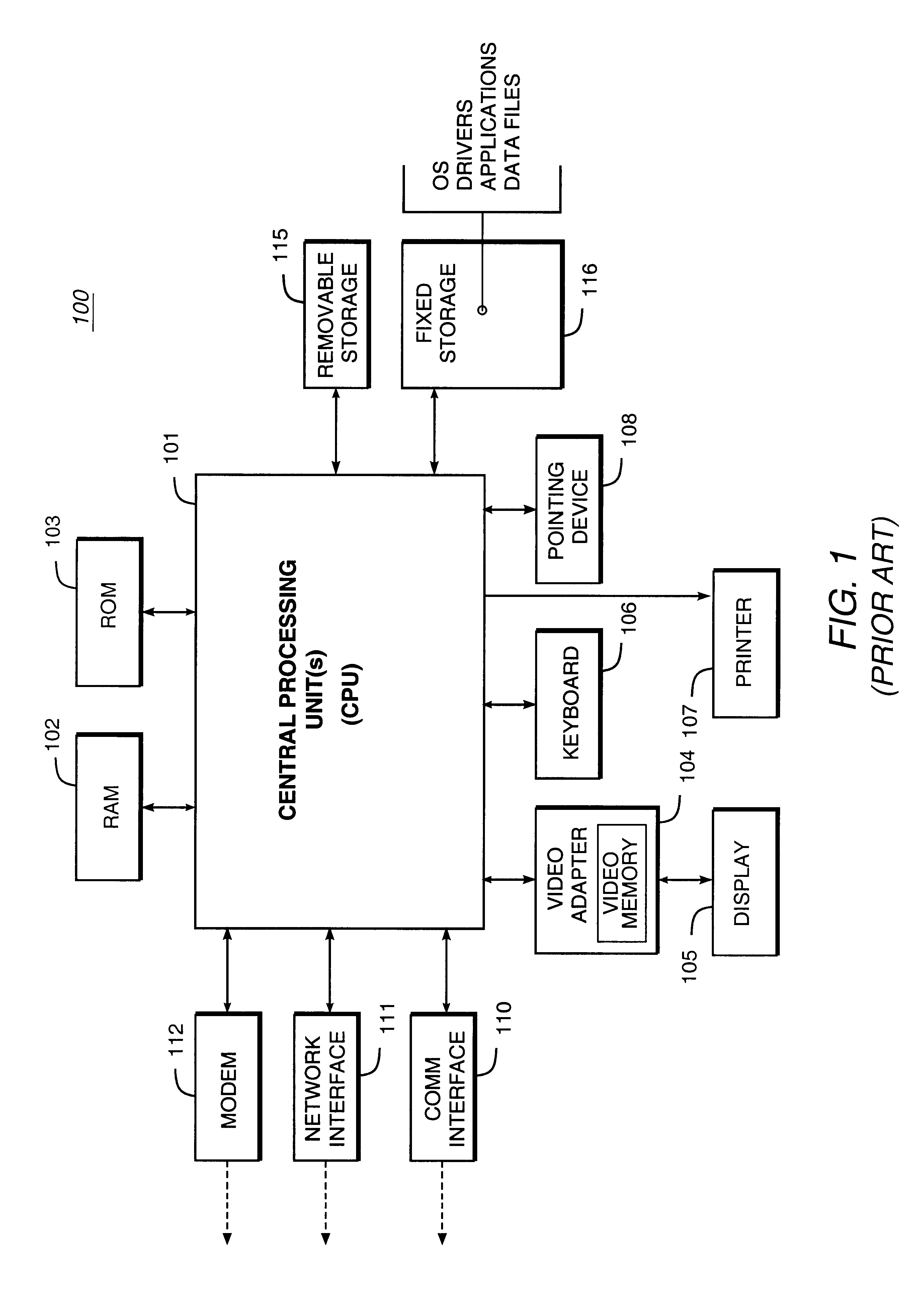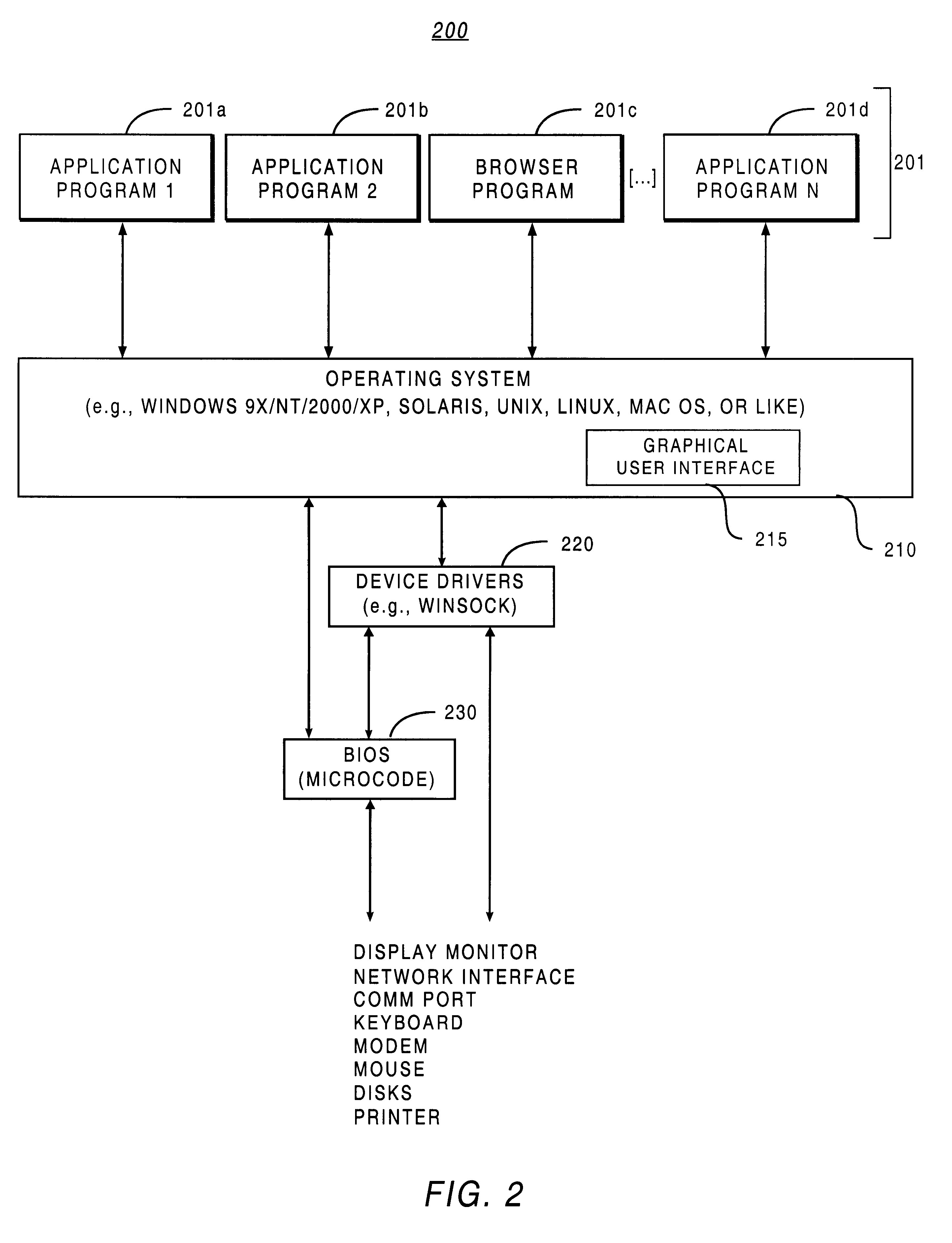Prime implicates and query optimization in relational databases
a relational database and query optimization technology, applied in the field of information processing environments, can solve the problems of avoiding the problem of reducing the efficiency of query optimization, and avoiding the problem of simplifying arbitrary boolean expressions
- Summary
- Abstract
- Description
- Claims
- Application Information
AI Technical Summary
Problems solved by technology
Method used
Image
Examples
Embodiment Construction
The following description will focus on the presently-preferred embodiment of the present invention, which is operative in a network environment executing client / server database applications. The present invention, however, is not limited to any particular application or environment. Instead, those skilled in the art will find that the present invention may be advantageously applied to any application or environment where optimization of index data structures is desirable, including those employed in non-SQL database management environments. The description of the exemplary embodiments which follows is, therefore, for the purpose of illustration and not limitation.
A. Basic system hardware (e.g., for desktop and server computers)
The present invention may be implemented on a conventional or general-purpose computer system, such as an IBM-compatible personal computer (PC) or server computer. FIG. 1 is a very general block diagram of an IBM-compatible system 100. As shown, system 100 co...
PUM
 Login to View More
Login to View More Abstract
Description
Claims
Application Information
 Login to View More
Login to View More - R&D
- Intellectual Property
- Life Sciences
- Materials
- Tech Scout
- Unparalleled Data Quality
- Higher Quality Content
- 60% Fewer Hallucinations
Browse by: Latest US Patents, China's latest patents, Technical Efficacy Thesaurus, Application Domain, Technology Topic, Popular Technical Reports.
© 2025 PatSnap. All rights reserved.Legal|Privacy policy|Modern Slavery Act Transparency Statement|Sitemap|About US| Contact US: help@patsnap.com



